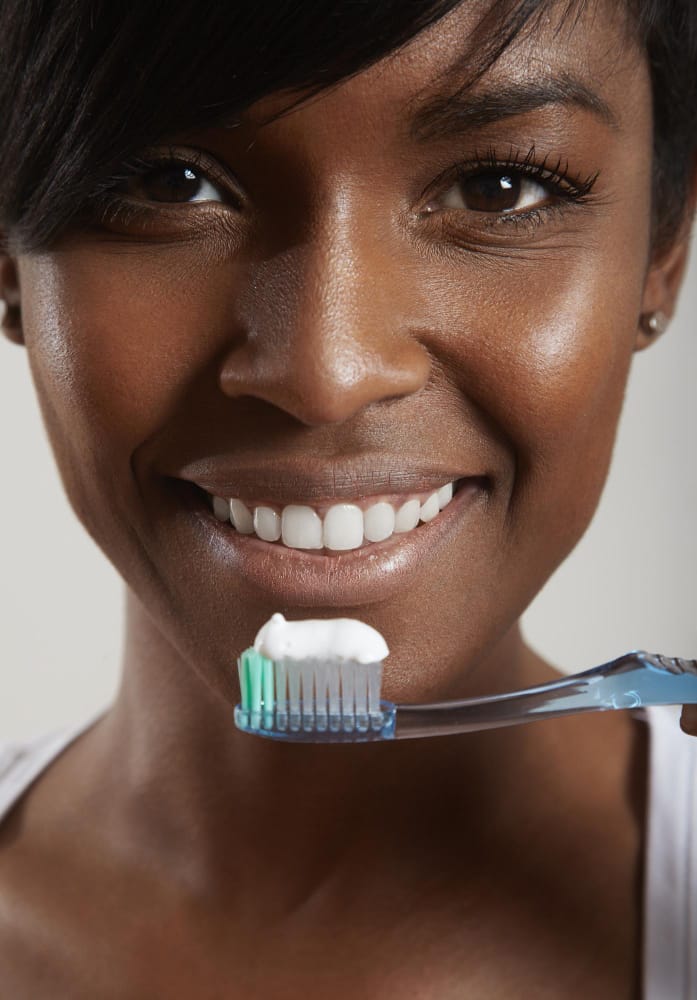FREE SHIPPING OVER $50
Stop Rinsing! Dentists Reveal Why You’re Washing Away Cavity Protection

It’s a ritual almost everyone follows, probably since childhood: you brush your teeth thoroughly, feel that clean, minty freshness, and then… you rinse. A quick swish of water or mouthwash, a spit, and you’re done. It feels natural, clean, and completes the job, right?
Well, prepare for a surprising truth that might just change your entire oral health routine. What if that seemingly harmless rinse is actually undoing all your hard work? What if, despite your best intentions, you’re inadvertently washing away cavity protection every single time you brush?
It sounds counterintuitive, but many dentists reveal that this common practice is a major misstep in your dental hygiene. It’s time to learn the science behind why you need to stop rinsing immediately after brushing your teeth. This simple, yet vital, shift can make a profound difference in safeguarding your smile.
The Fluoride Factor: Your Unsung Hero Against Cavities
To understand why rinsing is a no-go, we first need to talk about fluoride. This natural mineral is truly your smile’s best friend and the undisputed hero in the fight against cavities. You’ll find it in most toothpastes for a very good reason.
Here’s how fluoride works its magic:
- Strengthens Enamel: Your tooth enamel is the hard, protective outer layer. Fluoride incorporates into the enamel, making it stronger and far more resistant to the acid attacks that lead to tooth decay.
- Promotes Remineralization: Even if you have early signs of tooth decay (tiny spots where minerals have been lost), fluoride can help. It actively attracts other minerals like calcium and phosphate back to the tooth surface, helping to remineralize and repair these weakened areas. Think of it as a microscopic repair crew for your teeth!
- Inhibits Bacteria: While its primary role is to strengthen teeth, fluoride also has a modest ability to inhibit the growth of cavity-causing bacteria in your mouth.
When you brush with fluoride toothpaste, you’re essentially painting your teeth with this powerful protective shield. The longer that fluoride stays in contact with your enamel, the more effective it can be at doing its job.
The Big Mistake: Why Rinsing Undermines Your Oral Health
Now, let’s talk about the rinse. It feels like the natural conclusion to brushing, a way to eliminate the foamy residue. But here’s the problem: when you swish and spit with water or mouthwash immediately after brushing, you’re doing exactly what you don’t want to do.
You are literally washing away the concentrated fluoride that your toothpaste just deposited onto your teeth. Imagine carefully applying sunscreen to protect your skin, only to immediately jump into a shower. That’s essentially what happens when you rinse. You’re removing the very agent designed to prevent cavities and strengthen your enamel.
This means less fluoride stays behind to protect your teeth, especially those vulnerable spots between teeth and in the grooves. The protective layer is gone too quickly, making your teeth more susceptible to acid erosion and tooth decay in the hours that follow. It’s a fundamental error in a basic oral care routine that can silently sabotage your efforts to maintain optimal oral health.
What Dentists Recommend Instead: The Optimal Brushing Ritual
So, if you shouldn’t rinse, what should you do? Dental experts worldwide, including organizations like the Oral Health Foundation, advocate for a simple but transformative change to your teeth brushing habit.
Here’s the dentists’ advice for an optimal brushing ritual that truly maximizes cavity protection:
- Brush Thoroughly: Spend at least two minutes brushing all surfaces of your teeth with a fluoride toothpaste. Ensure you reach every tooth and gum line.
- Spit Out the Excess: Once you’re done brushing, simply spit out the excess toothpaste foam. Don’t add water.
- Do not rinse immediately: This is a crucial step. Resist the urge to swish water or mouthwash. Let the residual, concentrated fluoride stay on your teeth.
- Allow Fluoride to Work: The thin layer of fluoride left on your teeth continues to protect and remineralize your enamel. This prolonged contact is key for its effectiveness.
- Wait Before Eating or Drinking: Try to avoid eating or drinking anything for at least 30 minutes after brushing (ideally longer, if possible). This gives the fluoride even more time to bind to your enamel and provide robust cavity protection.
This “no-rinse” method ensures that the fluoride has the maximum opportunity to work its magic, integrating into your enamel and providing a strong defense against tooth decay.
Addressing Common Concerns: But What About…?
It’s natural to have questions when a deeply ingrained habit is challenged. Let’s tackle some common concerns:
- “But my mouth feels sticky/foamy!”
- This is a common feeling, and it might take a little getting used to. You can try using a slightly smaller amount of toothpaste. You could also take a tiny sip of water, swish it very gently with your saliva (not a full rinse), and then spit it out. The goal is to remove major excess, not to wash away all the fluoride.
- “What about fresh breath? Doesn’t mouthwash help?”
- For genuinely fresh breath, thorough brushing and flossing are far more important than rinsing. These remove the food particles and bacteria that actually cause bad breath. While mouthwash can temporarily mask odors, it doesn’t solve the root cause. If you’re going to use mouthwash, it’s best to use it at a different time of day, completely separate from brushing with fluoride toothpaste (e.g., mid-day, or at least 30 minutes after brushing). Opt for alcohol-free mouthwash to avoid drying out your mouth.
- “My dentist told me to use mouthwash!”
- Many dentists recommend mouthwash for specific purposes – perhaps you have gingivitis, or you need supplemental fluoride due to a high cavity risk. In these cases, discuss with your dentist the best timing. They will likely advise you to use it at a separate time from your main fluoride brushing, or they might recommend a fluoride mouthwash to replace the fluoride you’ve washed away, which is less efficient than just leaving the toothpaste on.
The Payoff: Stronger Teeth, Fewer Cavities
Adopting this simple “no-rinse” habit might feel strange at first, but the payoff for your oral health is significant. By allowing fluoride to stay on your teeth longer, you are actively participating in the remineralization process, making your enamel more resilient and resistant to the acids that cause tooth decay. This translates directly to stronger teeth and, potentially, fewer cavities down the line.
It’s a testament to how small, science-backed adjustments to your daily routine can yield substantial benefits. You are in control of your oral health, and with this simple tip from dentists, you can take your cavity protection to a whole new level.
Related Articles
- Dentist’s Warning: 3 Brushing “Mistakes” Silently Rotting Your Teeth (Stop Decay & Save Your Smile!)
- Ozempic SHOCKER: Forget “Face” – Experts Warn of a New, Hidden Danger Called “Ozempic Mouth”!
- URGENT WARNING: Stop Using THIS Mouthwash Now to Slash Your Bowel Cancer Risk (Surgeon’s Shocking Discovery)
- Think Your Toothpaste is Safe? The Shocking Ingredient You’re Brushing With Daily
- I Avoided the Dentist & Got a Celebrity Smile Using These Peroxide-Free Whitening Strips



